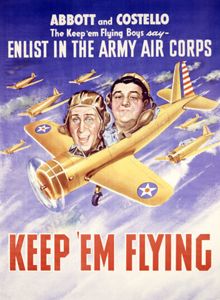Be careful what you wish for. Tall grass is fine for short test flights, but it can be a big problem when your model lands hundreds of meters from the launch site in a field like this.


Tom and George (above) helped me look for my Island Flyer on Sunday, unfortunately to no avail.
This is a "good news/bad news" situation. Someone will find my Island Flyer soon. But this is how he'll pick it up:


This is the last picture of my Island Flyer. I thought it would be funny to compare the Island Flyer's wingspan to the prop from Gale's new 'Scooter' model.

Scooter is one of Gale's original designs. This model is an enlarged version of the 30-inch prototype. Scooter was the name of a black cat Gale once had, and the model is a work of art evoking the character of its namesake.

Black tissue represents Scooter's fur. The instrument panel resembles a cat's paw, the headrest a foot pad. The complex contours of the wing symbolize Scooter's corkscrew tail.
Gale is still sorting out the trim on his new Scooter. Meanwhile, Tom is working on a couple of his new warbirds.


Tom just started flying his new Zero. The model has a DT and we think it'll need one. Tom did his usual magic on the digital graphics. Also note the scale details inside and outside the cockpit.

Tom's new P-47 had its best flight yet. This one looks like it'll be a contender at our upcoming FAC contest. And there's that damn thresher again in the background.


































